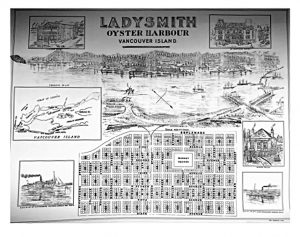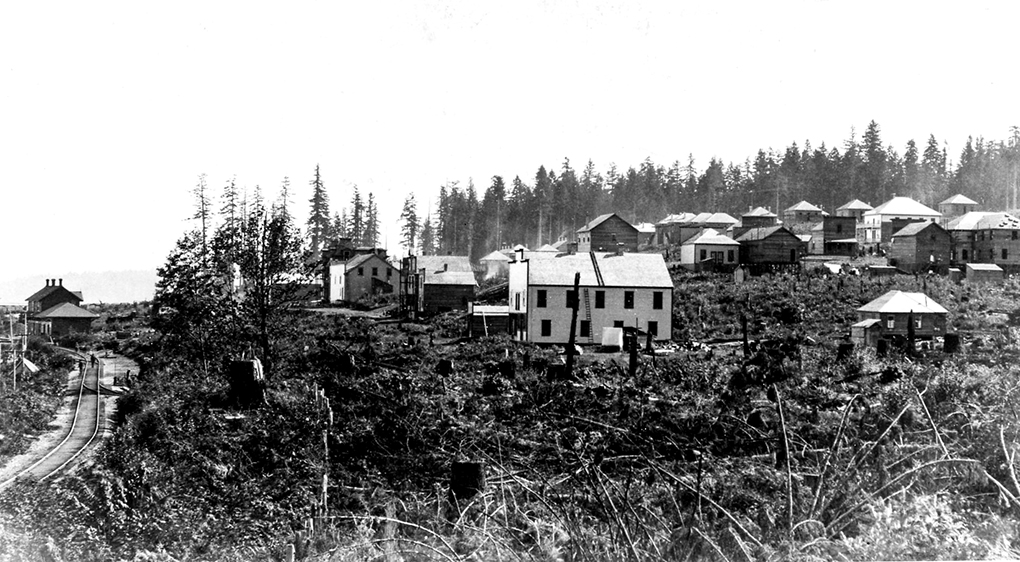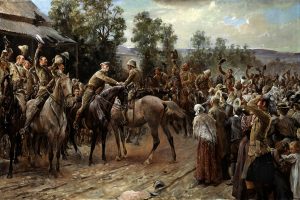How Our Town Was Named
In the late 1890s, the Wellington Colliery Company Ltd., run by the industrialist James Dunsmuir, was developing coal mines at Extension and building huge shipping wharves and coal bunkers at Oyster Harbour, the mines and port being connected by a railway. Dunsmuir decided that the miners should live in a new town to be constructed at Oyster Harbour and that they would commute daily by train to his Extension mines 16 kilometres to the north.
By 1899, a town layout had been surveyed on the hillside overlooking the harbour. Building lots were available for purchase or lease and were advertised as promising great prosperity and growth for the as yet unnamed town.
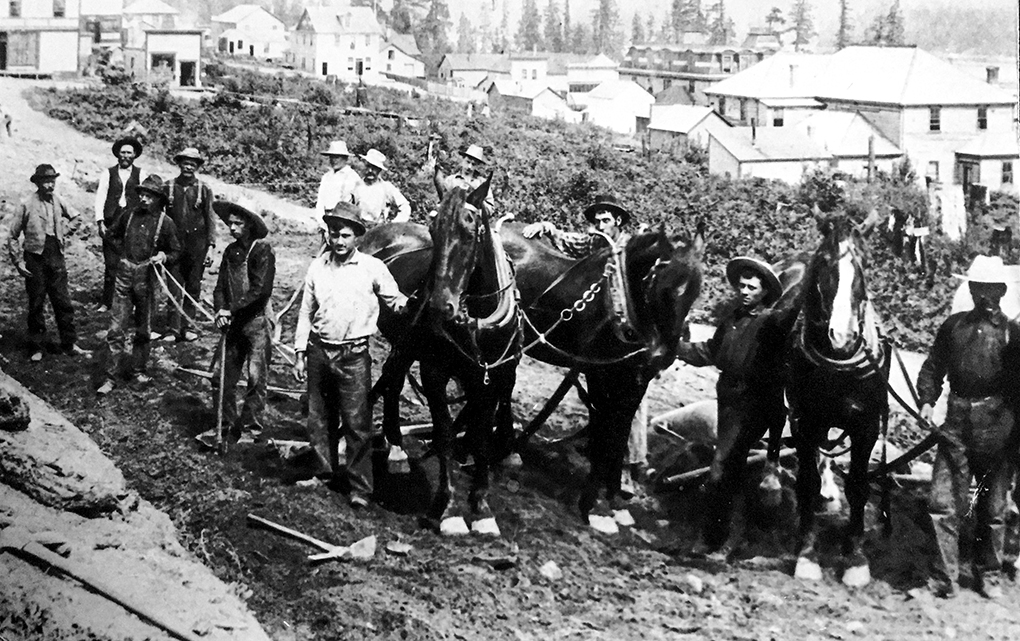
Ladysmith road crew grading First Avenue by hand and with horses hitched to split-log drag graders, circa 1900.
Many buildings, including houses and hotels, were transported in sections to the new town by railway from the mining town of Wellington, 35 kilometres to the north, which was being abandoned as the coal deposits there had recently been exhausted.
While the new town was being built, British troops were fighting in the 2nd Boer War in South Africa. Things had not been going well for the British until 28 February 1900, when British troops lifted the Boer siege of the Town of Ladysmith in the Transvaal.
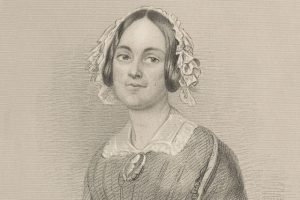
Portrait drawn by J.B. Hunt of Juana María De Los Dolores De León Smith, after whom the South African town of Ladysmith was named. Date: Published In 1847.
The South African town, which was initially called ‘Windsor’, had been renamed in 1860 as ‘Ladysmith’ in honour of Lady Juana Smith, who had performed many public works while her husband Sir Harry Smith was Governor of the Cape Colony. Their life story is a remarkable tale of adventure immortalized by the novelist Georgette Heyer in her book ‘The Spanish Bride’.
VIDEO Relief of Ladysmith with Ezra Pound piano music. Enjoy this video with a transcript (EN)
The relief of the siege of Ladysmith prompted much rejoicing throughout the British Empire, to which the Dominion of Canada belonged. Many musical scores were written in celebration.
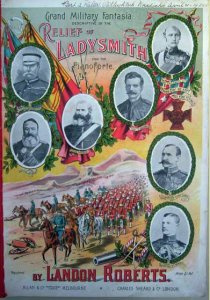
Cover of sheet music “Grand Military Fantasia: Descriptive Of The Relief Of Ladysmith,” written for pianoforte by Landon Roberts in 1900 to celebrate the Relief of the siege of the town of Ladysmith, South Africa during the Second Boer War.
Dunsmuir decided to name the new town at Oyster Harbour ‘Ladysmith’ in commemoration of the victory, with its streets named after British Boer War generals.
They remain so today.


